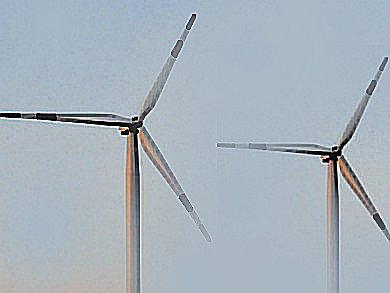Liming Zhou, State University of New York (SUNY) Albany, USA, and colleagues analyzed satellite data for the period of 2003–2011 over a region in west-central Texas, USA, where four of the world’s largest wind farms are located. A significant warming trend of up to 0.72 °C per decade was found, particularly at night-time, over wind farms relative to nearby non-wind-farm regions.
This warming is primarily attributed to wind farms as its spatial pattern and magnitude couples very well with the geographic distribution of the wind turbines. The warming effect is most likely caused by the turbulence in turbine wakes acting like fans to pull down warmer near-surface air from higher altitudes at night.
The estimated warming trends only apply to the study region and to the study period, and thus should not be interpolated into other regions, globally or over longer periods. For a given wind farm, once there are no new wind turbines added, the warming effect may reach a stable level.
While the warming effect reported is local and small compared to the strong background year-to-year land surface temperature variation, the authors believe that this work draws attention to an important scientific issue that requires further investigation.
- Impacts of wind farms on land surface temperature,
Liming Zhou, Yuhong Tian, Somnath Baidya Roy, Chris Thorncroft, Lance F. Bosart, Yuanlong Hu,
Nature Climate Change 2012.
DOI: 10.1038/nclimate1505




